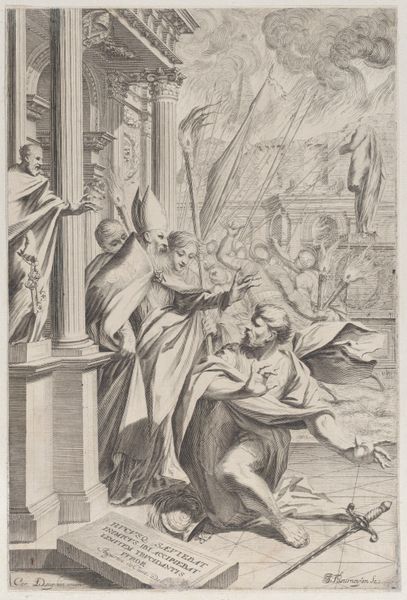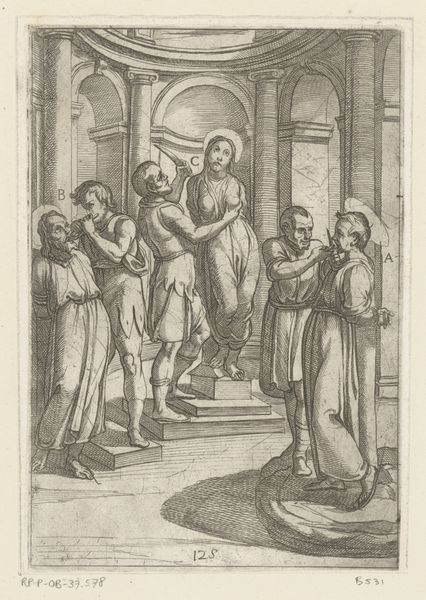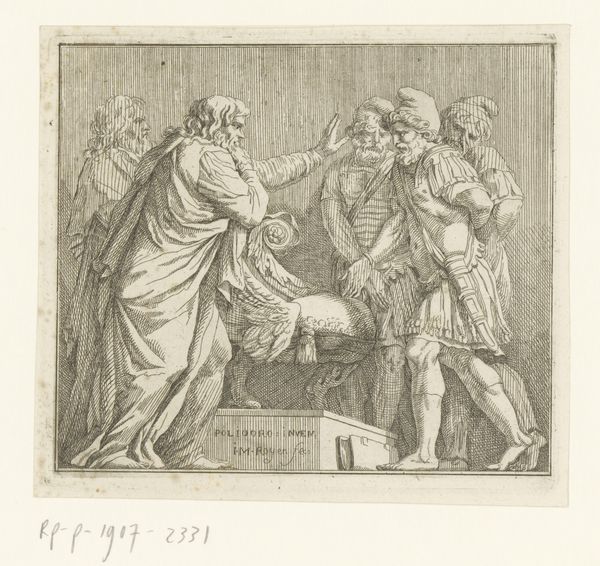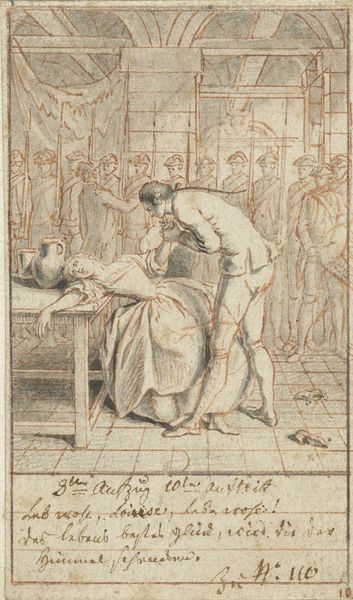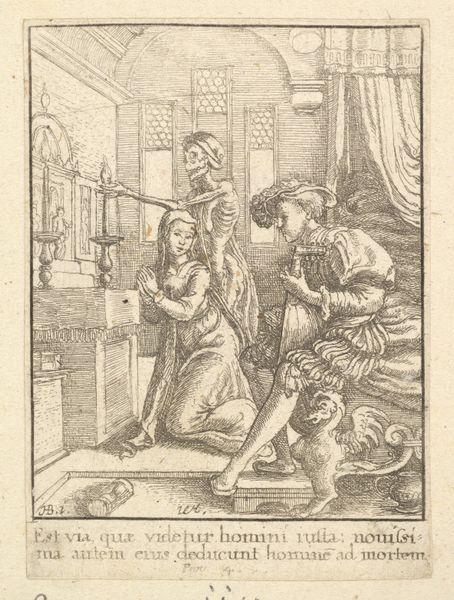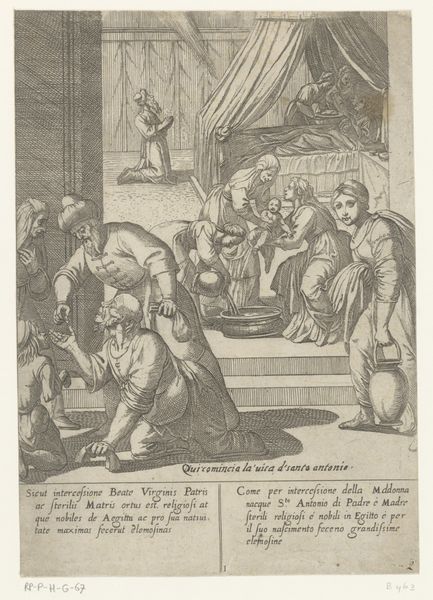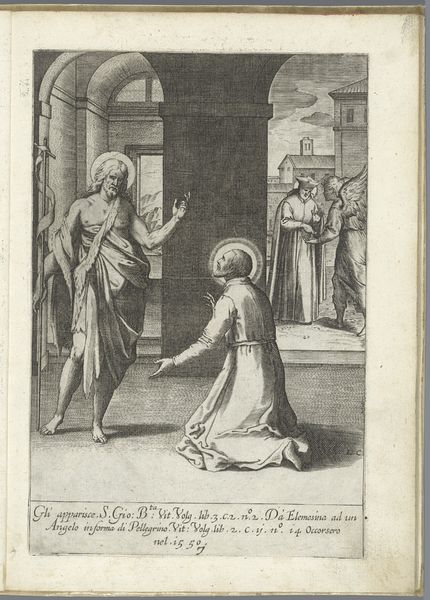
drawing, print, graphite
#
drawing
#
narrative-art
# print
#
men
#
graphite
#
history-painting
#
realism
Dimensions: sheet: 6 1/2 x 4 5/8 in. (16.5 x 11.8 cm)
Copyright: Public Domain
Friedrich Olivier made this drawing, "Return of the Prodigal Son," sometime in the first half of the 19th century. It captures a biblical scene of forgiveness, but its social context lies in the religious revival happening in Germany at the time. This revival, associated with the Nazarene movement, sought to restore spirituality to art. Artists like Olivier looked to the Bible for moral instruction and aimed to create art that promoted Christian values. In the drawing, we see the father embracing his son, a visual representation of divine mercy. Meanwhile, the other figures— the servant carrying a lamb for the feast, the judgmental brother, and the onlookers — show the social implications of the return. To truly understand this work, one must look at the cultural and religious dynamics of 19th-century Germany, researching the Nazarene movement and its influence on the art institutions of the time. By understanding the social fabric in which it was made, we can reveal how art reflects and shapes cultural beliefs.
Comments
No comments
Be the first to comment and join the conversation on the ultimate creative platform.


